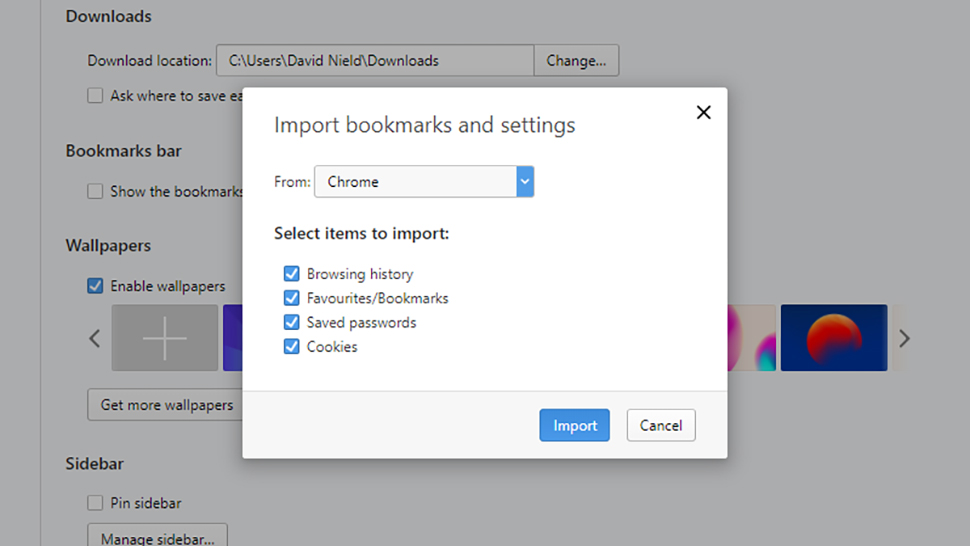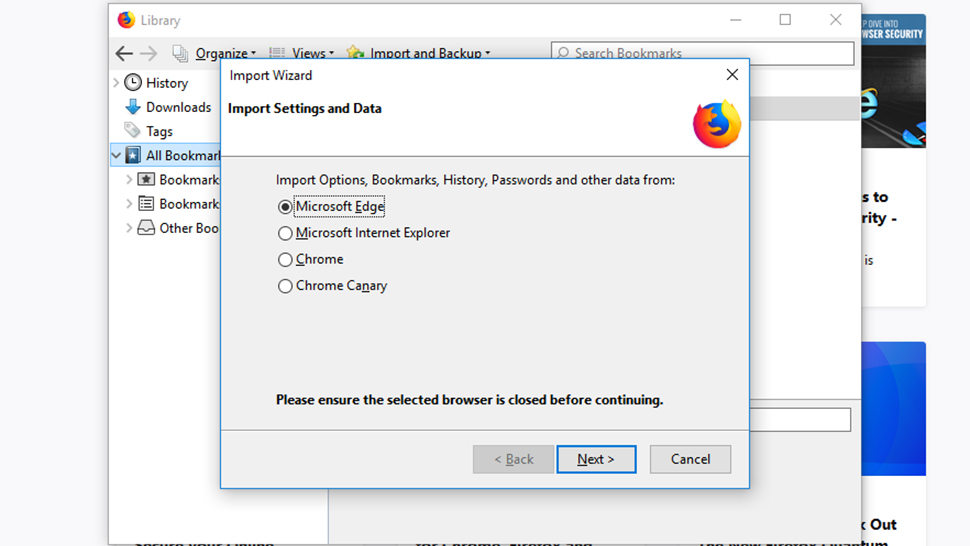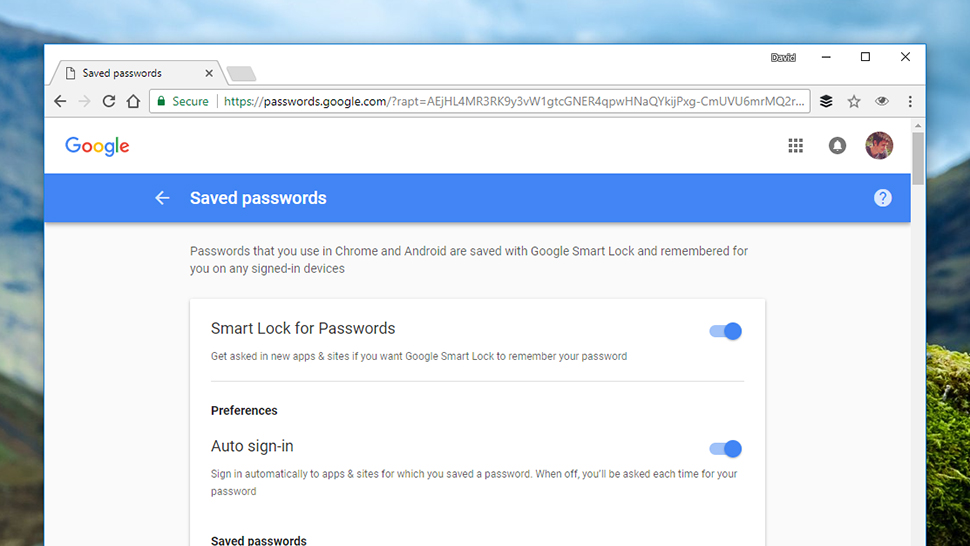Impressed with the new spit and polish of Firefox Quantum? Or ready to return to the warm embrace of Safari? We now carry so much of our digital lives around with us in our browsers that switching isn’t all that straightforward – here’s how to make sure you take everything with you when you jump from one to the other.
We’re going to arrange this guide by the name of the browser you’re switching to, but to a large extent, you’re restricted by the browser you’re switching from – some applications make more data available for export than others.
Switching to Google Chrome

Image: Screenshot
Open up the Chrome Settings tab and click the Import bookmarks and settings link that’s prominently displayed, and you can then choose which browser you’re moving from. Hats off to Firefox, which allows you to transfer browsing history, bookmarks, saved passwords, search engines, and even autofill data.
If you’re (finally!) moving over from the creaking Internet Explorer, then you can move browsing history, bookmarks, and passwords. As far as the newer Microsoft Edge goes though, all you can transfer is bookmarks. Safari, like Microsoft Edge, only allows bookmarks to be moved over.
There’s no option for Opera unfortunately – if you want to carry your bookmarks over, and that’s all you can do, you need to choose Menu, Bookmarks, and Export Bookmarks in Opera first, and then select Bookmarks HTML File in the import window in Chrome.
Switching to Opera

Image: Screenshot
Find the Import bookmarks and settings button under the Basic heading on the Settings tab. Again, you get a choice of browsers, with Chrome and Firefox being the most cooperative. They each allow you to transfer browsing history, bookmarks, passwords, and even stored cookies.
Internet Explorer allows the same four types of data to be moved to your new Opera browser, but Microsoft Edge and Safari restrict you to just bookmarks. Pick your browser from the drop-down menu at the top, then choose your data, then click Import to confirm.
Switching to Microsoft Edge

Image: Screenshot
If Microsoft’s latest attempt at a web browser has caught your eye, you’ll find the data transfer options by opening the app menu then choosing Settings and Import from another browser. You’ll be met with three options, plus the option to import (or export) bookmarks as an HTML file, if you need to.
Internet Explorer is the friendliest of the other browsers, allowing bookmarks, browsing history, cookies, passwords, form data, and settings to be imported into Edge — just about everything then. Microsoft obviously wants to make the transition as easy as possible.
For Chrome, that selection shrinks to bookmarks, browsing history, cookies, passwords, and settings (no form data), though you can’t pick and choose, and on Firefox you can only move over bookmarks. If you’re switching from Opera, you need to export your bookmarks as an HTML file, then import them into Edge – that’s all you can move over.
Switching to Firefox

Image: Screenshot
Firefox Quantum has a lot going for it and if you want to move over all your webby possessions to Mozilla’s browser then you need to click the new Library button on the toolbar (it looks like a shelf of books), then Bookmarks and Show All Bookmarks. At the top of the new dialog box, choose Import and Backup, then Import Data from Another Browser.
You can then make your pick of browsers. Chrome allows cookies, browsing history, saved passwords, and bookmarks to be moved across, as do Internet Explorer and Microsoft Edge. We couldn’t actually get passwords and browsing history to move across from Edge, despite the option being there, so it’s possibly still a work in progress…
Again, Safari only allows bookmarks to be moved across, and in the case of Opera you you can only move over bookmarks: you need to manually export them as we described above, before choosing Import Bookmarks from HTML in the Import and Backup menu in Firefox.
Switching to Safari

Image: Screenshot
If you’re heading back to Safari on macOS for whatever reason, you’ll find the browser data import option by going to File, Import From, and choosing Chrome or Firefox from the list. Both options let you move over bookmarks and browsing history, but with Firefox you can transfer saved passwords too.
On the same Import From submenu there’s a Bookmarks HTML File option, which you can use to import bookmarks from Opera or any other browser (like Microsoft Edge on Windows). These imported favourites appear in their own “Imported” folder in your Safari bookmarks.
Plugging the gaps

Image: Screenshot
If your new browser of choice can’t natively transfer all the data from your old browser, then your options are very much on the limited side. You may well just have to bite the bullet and leave your browsing history or your saved passwords behind, if they’re not covered in the options we’ve mentioned above.
You can’t get any browser extensions to plug the gaps, for example – even when export tools are available, like this history exporter for Chrome, you’re not outputting data in a way that other browsers can then import.
However, there are tools that can help you next time you bail from one browser to another: If you want to future-proof your passwords against any browser switching you might want to do in the years ahead, install a dedicated password manager like 1Password, Keeper Security, Dashlane, or LastPass (we’ve covered these tools in more depth here).
These apps work across multiple browsers and multiple platforms, so your passwords are saved independently of your browser, and can move with you. The likes of Dashlane and LastPass can store other form data too, like addresses and payment information.
Finally, if you go all-in with Google, you can take your passwords and browsing history with you from browser to browser, to a certain extent: Your saved passwords are always available at https://passwords.google.com, and your browsing history is at https://myactivity.google.com/myactivity, as long as you were signed into Google when doing the searching.
These web apps of Google’s won’t integrate seamlessly into your new browser, but they can act as a stopgap until your new software is completing your URLs and filling out your login details like you need it to.
